DID YOU KNOW?

Cyclopsitta

nigrifrons
Size:
13 cm (5.1 in)
Weight:
28-35 g (1-1.2 oz)
Subspecies including nominate:
three: C. n. nigrifrons, C. n. amabilis, C. n. ramuensis
Colour Adult:
C.n. nigrifrons: Both adults as in similar gulielmitertii, but forehead and forecrown to area behind eyes black.
C.n. ramuensis: Both adults as in amabilis, but forehead and forecrown to area behind eyes washed blue and black.
C.n. amabilis: Male-forehead and crown to area below eyes black; pale yellow upper abdomen, breast, and sides of head; black on ear coverts absent; smaller in size. Female-breast to upper abdomen orange; lower cheeks dusty black, joining black crown behind eyes; lores, throat and cheeks pale yellow.
Colour Juvenile:
C.g. nigrifrons: As in adults.
C.g. ramuensis: As in adults.
C.g. amabilis: As in adult female but breast more green.
Call:
Similar to Orange-breasted Fig Parrot (Cyclopsitta gulielmitertii): in flight, gives a shrill, frequently repeated tseet, an explosive and chirping chip-chip-chip and chattering and wheezing calls while feeding.
More Information:
Captive Status:
Rare
Longevity:
Not recorded.
Housing:
Walk-in enclosure, minimum length 2.1 m (7 ft). Planted if possible.
Diet:
Dried soaked figs (soak in water a few hours), two or more per bird per day; once daily, a drop of Konakion (Roche) or other vitamin K additive; fruit such as: apple, pear, orange, banana, pomegranate, forming at least 50 percent of diet; soaked sultanas; berries such as: elder, mountain ash, pyracantha; spray millet; small seed mixture such as: canary, oats safflower, limited sunflower; cooked beans and pulses; rearing food: hard-boiled egg, wholegrain bread and carrot, all ground to crumbly consistency. Complete pellet, if taken. Breeding diet: some pairs consume mealworms mainly for first 3 weeks of chicks’ lives, also well-cleaned maggots or proprietary insectivorous food. Withhold seed for first 3 weeks of chicks’ lives.
Enrichment:
Provide planted aviary. Also provide lots of bird-safe branches and browse to chew on.
Nest Box Size:
Nest log 4″ (10.1 cm) wide x 10″ (25.4 cm) high.
Clutch Size:
2
Fledging Age:
5.5-7.5 weeks
Hatch Weight:
—
Peak Weight:
—
Weaning Weight:
—
World Population:
Unknown, decreasing.
IUCN Red List Status:
Least Concern
CITES Listing:
Appendix II
Threat Summary:
Is considered to have a medium dependency on forest habitat, and tree cover is estimated to have declined by 2.4% within its mapped range over the past 10 years. Therefore, it is tentatively suspected that this may have led to a population decline of between 1-19% over the same period.
Range:
C. n. nigrifrons: N West Papua between Mamberamo and Sepik Rivers.
C. n. amabilis: N Papua New Guinea (Huon Peninsula to Milne Bay)
C. n. ramuensis: NE Papua New Guinea (Ramu River district)
Habitat:
Rain-and-monsoon forest, gallery and savanna woodland, Melaleuca swamp forest, partly cleared areas, in lowlands and hills up to 1100 m (but rarely recorded above 800 m).
Presumably sedentary.
Wild Diet:
Presumably similar to Orange-breasted Fig-Parrot (Cyclopsitta gulielmitertii): seeds of Ficus figs probably main staple, but also seeds of Glochidion, whose fruits are broken apart, and Acacia auriculaeformis; also apparently the inflorescences of Poikilospermum.
Ecology and Behaviour:
Presumably similar to the Orange-breasted Fig-Parrot (Cyclopsitta gulielmitertii): typically encountered in small groups of 6–10 birds, especially in the canopy but also regularly in lower stories.
Clutch and Egg Size:
2 eggs.
Breeding Season:
December-June; nest is in arboreal termitarium or sometimes an epiphyte.
Related Links:
—
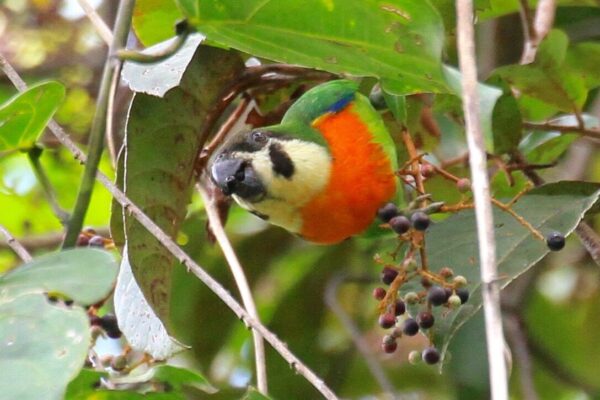
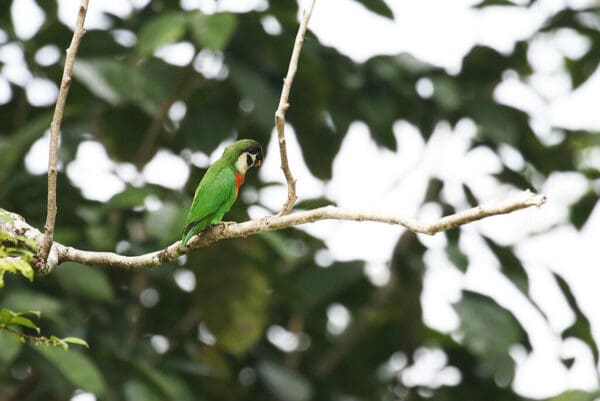
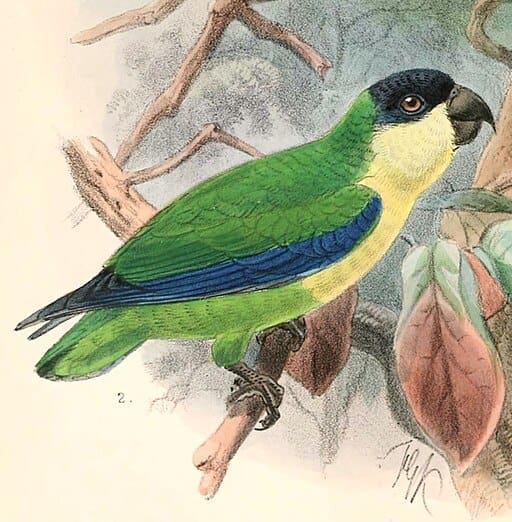
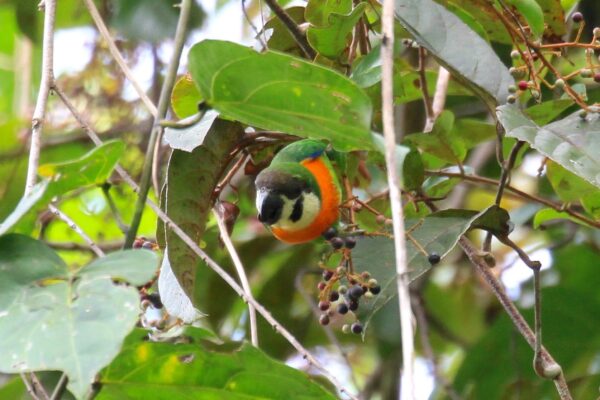
![© Charles Davies [CC BY-NC 2.0] via Flickr A wild Black-fronted Fig Parrot feeds on berries](https://parrots.org/wp-content/uploads/2024/07/Black-fronted-Fig-Parrot-Charles-Davies-CC-BY-NC-2.0-e1733240949823-100x100.jpg)
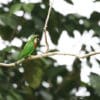
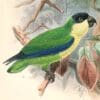
![© Charles Davies [CC BY-NC 2.0] via Flickr](https://parrots.org/wp-content/uploads/2024/07/Black-fronted-Fig-Parrot-2-Charles-Davies-CC-BY-NC-2.0-100x100.jpg)